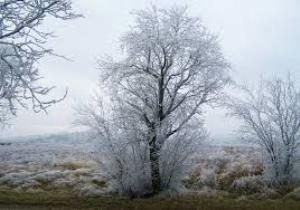 Batesville, In. — The nonprofit Federal Alliance for Safe Homes (FLASH)® and the Great Winter Weather Prep are offering 21 tips to keep families safe and warm when the power goes out and freezing temperatures arrive.
Batesville, In. — The nonprofit Federal Alliance for Safe Homes (FLASH)® and the Great Winter Weather Prep are offering 21 tips to keep families safe and warm when the power goes out and freezing temperatures arrive.
Foam, Dome, & Drip – Affordable Ways to Protect Your Home
For as little as $1 per 6’ of insulation, you can stop pipes from freezing during winter and even when the power goes out.
- Insulate pipes exposed to the elements or cold drafts with insulating foam. For as little as $1 per 6’ of insulation, you can stop pipes from freezing and save energy.
- Place an insulating dome or other covering on outdoor faucets and spigots to reduce the likelihood of the water in your pipes freezing, expanding, and causing a costly leak.
- Drip faucets to reduce the build-up of pressure in the pipes. Even if the pipes freeze, you have released the pressure from the water system reducing the likelihood of a rupture. If you are going out of town, and suspect that temperatures will drop or a power outage will occur, turn off the water to your home and open all of the taps to drain the water system. This way you won’t return to a frozen, soggy mess.
- 4.Check for air leaks around windows and doors using a lit incense stick. If the smoke is sucked out of an opening, seal the leak with caulk, spray foam, or weather stripping.
Keep Your Family Safe & Warm
- 5.Keep a supply of flashlights, batteries, and a battery-powered radio on hand. Do not use candles as they pose a fire hazard.
- After the power goes out, make sure to turn off all lights but one, to alert you when power resumes.
- Resist the temptation to call 911 for information during power outages. Instead use your battery-powered radio for information.
- Keep your car fuel tank at least half full as gas stations rely on electricity to operate their pumps and may not have back-up power.
- Keep extra cash on hand since an extended power outage may prevent you from withdrawing money from ATMs or banks.
- Be a volunteer snow angel. Volunteer to check on elderly neighbors, friends, or relatives who may need assistance during the outage.
- Wear layers of loose fitting, lightweight, warm clothing rather than one layer of heavy clothing. The outer garments should be tightly woven and water repellent. Never burn charcoal for heating or cooking indoors.
- If you are using a gas heater or fireplace to stay warm, be sure the area is properly ventilated.
- Arrange ahead of time with family, friends, or neighbors for a place to go if you have an extended outage. If you have nowhere to go, head to a designated public shelter. Text SHELTER + your ZIP code to 43362 (4FEMA) to find the nearest shelter in your area (example: shelter 12345)
Food
- Keep a supply of non-perishable foods, medicine, baby supplies, and pet food on hand, and have at least one gallon of water per person per day on hand.
- Avoid opening the fridge or freezer. Food should be safe as long as the outage lasts no more than four hours.
Generators
- Do not run a generator inside a home or garage. Use gas-powered generators only in well-ventilated areas.
- Follow manufacturer’s instructions such as only connect individual appliances to portable generators.
- Don’t plug emergency generators into electric outlets or hook them directly to your home’s electrical system as they can feed electricity back into the power lines, putting you and line workers in danger.
- Consider purchasing and installing a permanent home generator with an automatic on switch.
When Power Returns
- When power comes back on, it may come back with momentary “surges” or “spikes” that can damage equipment such as computers and motors in appliances like the air conditioner, refrigerator, washer, or furnace. Be sure to install a system of surge protection that consists of point-of-use devices and whole house surge protection.
- When power is restored, wait a few minutes before turning on major appliances to help eliminate potential problems caused from sharp increases in demand.
For more information, tips, and resources for winter safety visit Flash.org and the Great Winter Weather Prep preparedness campaign.



